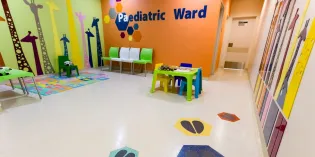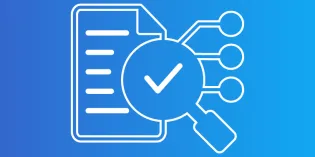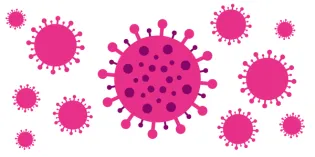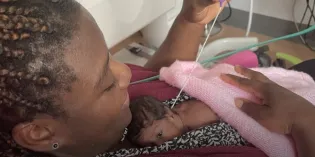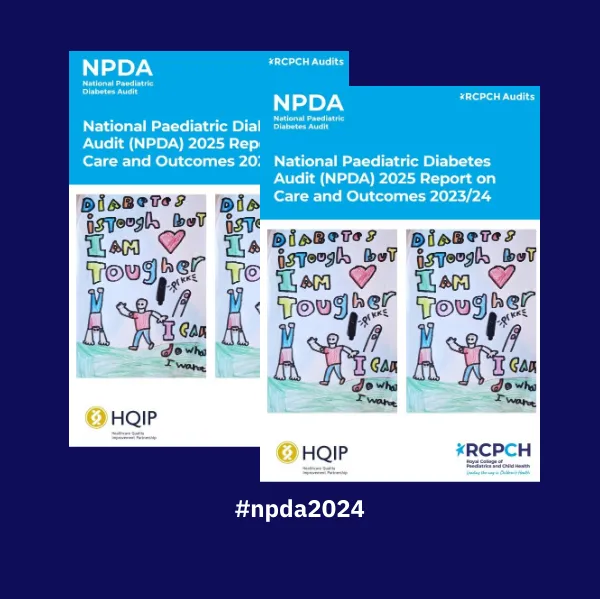
Annual report 2023/24: Care processes and outcomes
Published in March 2025, the 2023/24 report covers the health checks (care processes) and outcomes for children and young people with diabetes who have attended PDUs (paediatric diabetes units) from 1 April 2023 to 31 March 2024.
The report aims to address a series of questions relating to paediatric diabetes care, which include:
- What proportion of children and young people with diabetes are reported to be receiving key age-specific processes of diabetes care, as recommended by NICE?
- How many achieve outcomes within specified treatment targets?
- Are children and young people with diabetes demonstrating evidence of small vessel (microvascular) disease and/or abnormal risk factors associated with large vessel (macrovascular) disease prior to transition into adult services?
You can download our 2023/24 annual report and our 'results at a glance' summary below - go to Downloads.
Key messages
- Despite the incidence of paediatric diabetes in 2023/24 returning to near pre-COVID-19 rates, the prevalence of children and young people (CYP) with diabetes cared for in a PDU in England and Wales has increased by 16% since 2018/19.
- Overall, the completion rate of health checks for Type 1 diabetes at all ages remains high. 92% of all expected health checks were completed, but there is considerable variation between PDUs ranging from 75% to 100%.
- The national (England and Wales combined) median HbA1c for children and young people with Type 1 diabetes has fallen to 60.0 mmol/mol. This is a 0.5 mmol/mol decrease from 60.5 mmol/mol in 2022/23.
- There have been limited improvements in the national rates of microvascular and macrovascular abnormalities despite decreases in HbA1c and the increased use of technologies.
- 94% of CYP with Type 2 diabetes had a BMI in the overweight or obese range, compared to 42% of CYP with Type 1 diabetes.
- The percentage of children and young people with Type 1 diabetes using diabetes related technologies has increased.
- The use of advanced technology to deliver insulin and monitor blood glucose levels is associated with a lower HbA1c.
- The rates of post-diagnosis hospital admissions in 2023/24 are stable and the incidence of DKA at diagnosis of Type 1 diabetes also remains stable at 26%.
- Inequalities related to ethnicity and deprivation remain prevalent:
- The mean HbA1c for Black CYP with Type 1 diabetes has increased to 71.0 mmol/ mol from 70.0 mmol/mol in 2022/23 and remains higher than that seen in their White equivalents of 63.0 mmol/mol.
- The average HbA1c gap remains the same between the most and least deprived quintiles: 66.0 and 60.0 mmol/mol respectively in 2023/24, compared to 66.8 and 59.9 mmol/mol in 2022/23.
- The technology usage (rtCGM, insulin pumps and Hybrid Closed Loop systems) is less prevalent amongst ethnic minority groups and those living in deprived areas.
Individual unit level reports
You can download your unit level report from our dedicated SharePoint site.
Individual unit level posters
Summary and feedback posters for your unit level 2023/24 audit year results are also available to download from our SharePoint site. These posters can be printed for display in your clinic waiting area, or can be shared with your contacts via email.
Additional data files
As part of our commitment to open data, we have made available our data files on specific measures from the audit.
Previous years' reports
Previous years' reports are available in the downloads section.
Parents and carers reports
Our parents and carers reports provide a lay summary of the findings from the NPDA annual reports. We produce versions in English and Welsh.
We will be uploading our latest parents and carers report shortly and will communicate to all units when this is available to download from our parents and carers report page.
Background and audit aims
The NPDA was established to compare the care and outcomes of all children and young people with diabetes receiving care from Paediatric Diabetes Units (PDUs) in England, Wales and Jersey. The audit is commissioned by the Health Quality Improvement Partnership (HQIP), funded by NHS England and the Welsh Government, and is managed by the Royal College of Paediatrics and Child Health.
Our aims:
- Monitor the incidence and prevalence of all types of diabetes amongst children and young people receiving care from a PDU in England, Wales and Jersey
- Establish which key care processes are being received by children and young people with diabetes
- Enable benchmarking of performance against standards of care specified by the National Institute for Health and Care Excellence (NICE) guidance at PDU and national level
- Determine the prevalence and incidence of diabetes-related complications amongst children and young people with diabetes
You can read more about the audit and what we measure.
NPDA reporting webinar, February 2024
NPDA Manager Holly Robinson and NPDA Analyst Cillian Brophy hosted a webinar and Q&A in February to explain the processes involved in cleaning, analysing and reporting the core NPDA dataset, including upcoming plans for quarterly reporting and provision of data for hybrid closed loop reimbursement.





